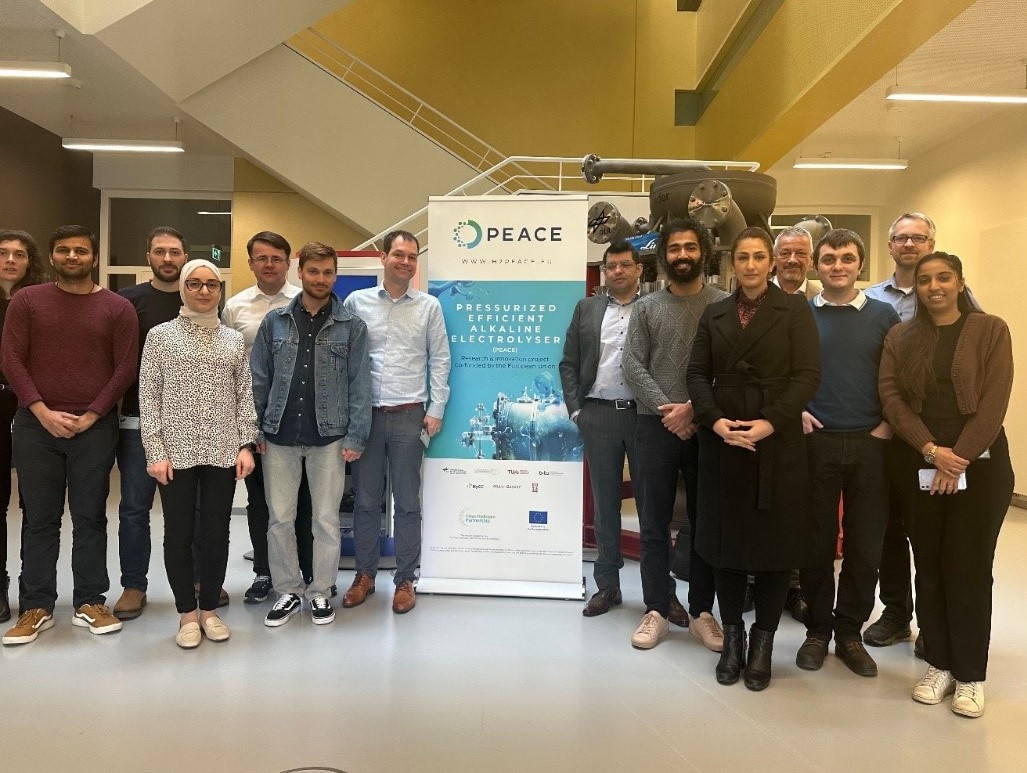PEACE project meeting No. 2
PEACE project got together for two days filled with discussions
Published: March 12, 2024
At the end of February, the PEACE project team convened at the German Aerospace Center (DLR) premises in Stuttgart, Germany. The aim was to review the progress of its research & innovation activities, which should lead to development of a highly pressurized alkaline electrolysis technology, reducing the cost of green hydrogen production and its subsequent utilisation.

DLR in Stuttgart, Source: DLR (CC BY-NC-ND 3.0)
Following the kind invitation of the Coordinator, Dr. Fatemeh Sanaz Razmjooei (Institute of Engineering Thermodynamics, DLR), the PEACE project team had the opportunity to provide an overview of the status of all project Work Packages (WPs), discuss upcoming steps, and exchange insights on current developments and future directions. The PEACE team was joined by its Project Officer from the granting authority, the Clean Hydrogen Partnership, to follow closely the project recent developments.
What was discussed during the PEACE meeting?
The Coordinator opened the meeting with an overview presentation of the project. To date, PEACE has successfully submitted five deliverables to the granting authority, as outlined in the project plan.
The following speech of Paolo Lupotto (MMI), the WP3 leader, informed the audience on the stack components and design refurbishment and qualification. The presentation triggered a fruitful and in-depth discussion on various characteristics and features of the stack, including insights into the state-of-the-art of stack industry. Paolo’s presentation was augmented by an illustrative on-site dismantling of a single cell test rig.

PEACE project team in Stuttgart, Source: PEACE project
The meeting section on the WP6 was divided to three parts. Karolína Řípová (GG), the leader of the WP6, provided an overview of the project communication, dissemination, and exploitation actions. Communication tools such as the project website, and X and LinkedIn profiles, are fully operational, ensuring effective information flow to the PEACE target groups. The Coordinator, then, informed the team about upcoming project workshops, with a public session scheduled for May 2026. Valentina Bisinella (DTU) concluded the WP6 section with a presentation on the ISO-standard methodology, Life Cycle Assessment (LCA), which will evaluate the environmental benefits and drawbacks of the PEACE technology. Discussion topics included analysis boundaries (cell scale vs. plant scale) and the inclusion of various technologies for comparison (e.g., AEL only, or PEM, AEM and SOEC).
The first day of the meeting concluded with WP2 presentations. S. Pandey (TU/e) presented initial results on the electrochemical tests, sparking a lively discussion among PEACE colleagues. Lastly, the DLR team presented recent testing protocols for further test protocol harmonization. On the second day, H. Wiggenhauser (DLR) provided an overview of the status of WP5 and announced the completion of the simulation scenarios development task.
The PEACE meeting concluded with a presentation of H. Mahfouz (BTU CS) on WP4 activities, which are currently finalising the list of components for Balance of Plant of the PEACE demonstrator and preparing the test bench for the demonstrator.